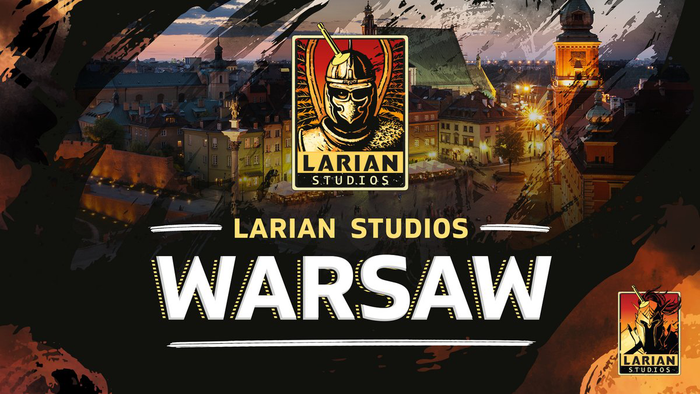
Featured Blog | This community-written post highlights the best of what the game industry has to offer. Read more like it on the Game Developer Blogs.
The Democracy of Touch: Game-Maker and a New Beginning
Twenty years ago, RSD Game-Maker came and went. Now it has gone open source. What can this neglected design environment have to teach us today? Could its ideas be key to a future of videogame literacy?

 On Saturday morning, July 12th 2014, programmer Andy Stone released his original source code for Game-Maker 3.0. This was the final release of Game-Maker, published exactly twenty years ago -- and it came at an odd time.
On Saturday morning, July 12th 2014, programmer Andy Stone released his original source code for Game-Maker 3.0. This was the final release of Game-Maker, published exactly twenty years ago -- and it came at an odd time.
When it was new, Game-Maker was unlike anything on the market. There had been a few game creation systems, mostly for the Commodore and Amiga – and a few games like Lode Runner included level editors – but for the DOS-based PC there had never been something so comprehensive. Unlike Pinball Construction Set or Shoot-‘Em-Up Construction Kit, Game-Maker was built to accommodate any game genre (though it did slant toward avatar-based, objective-oriented action-adventure games). Unlike ZZT, Game-Maker supported large, 256-color VGA sprites and background tiles. Unlike Garry Kitchen’s GameMaker, it allowed hundreds of huge, scrolling maps per game, countless active sprites, and as many unique resources as the user wanted to pack in.
Even compared to contemporary stand-alone games, Game-Maker was cutting-edge. Where games like Commander Keen used full-screen EGA displays and Jill of the Jungle used choppy windowed VGA, from the start Game-Maker used a full-screen, smooth-scrolling VGA display. It supported digital Sound Blaster effects when other games were still using AdLib.
Then tides and tastes changed. 3D cards caught on, and game design became big and expensive. The Web caught on, and the BBS culture that had supported the shareware scene basically died out. The whole independent design scene went dormant, not to emerge again until the next century. Game-Maker no longer fit the market. Development ended, and its coders went on to other things. Slowly the software was lost to time -- if not entirely forgotten.
There were some quirks and bugs, and odd choices and priorities. Andy was so proud of his full-screen VGA display that he didn’t want to hide it, so there was no option for a heads-up display – on-screen health bars or counters or what-have-you. He was so intent on providing a fun and visual design experience that he stripped out any feature that might have required scripting or complex variables. The engine was saddled with a weird music format and no tools to write for it. A desire for keyboard compatibility made a muddle of key-mapping. The list goes on. But behind it all was a keen philosophy, that still shines bright today.
The Walled Garden
 More than any other game creation system before or since, Game-Maker was designed as a creative playground. The idea was to make game development an experience unto itself. Andy’s slogan was, “It’s as fun to make them as it is to play them” – and anything that got in the way of that goal was out, unless he could figure out how to make it fun. As a result, Game-Maker comes off less like a set of design tools and more like a full-game editor. It’s like someone handed you Lode Runner or Wrecking Crew, but then on top of the level editor allowed you to change the sprites and the tiles, the physical properties and logic, and basically every other game element, until it became something else.
More than any other game creation system before or since, Game-Maker was designed as a creative playground. The idea was to make game development an experience unto itself. Andy’s slogan was, “It’s as fun to make them as it is to play them” – and anything that got in the way of that goal was out, unless he could figure out how to make it fun. As a result, Game-Maker comes off less like a set of design tools and more like a full-game editor. It’s like someone handed you Lode Runner or Wrecking Crew, but then on top of the level editor allowed you to change the sprites and the tiles, the physical properties and logic, and basically every other game element, until it became something else.
This is a different philosophy of design than you see most places. Until recently game creation systems were kind of damned by techno-elitism. The theory was, if you wanted to design a game you had to code it yourself. Any idiot can spit out resources and slap them together; what matters is the work that you put into making it work. More recently the indie movement has turned that on its head. Now, content and concept are king. The idea is, any idiot can code an engine. What matters is what you have to say with the given tools. As such, game creation systems like GameMaker Studio and Multimedia Fusion have earned a sort of legitimacy, at least as an entry point. If there’s a snobbery, it’s more around the feature set – what the tools allow you to do, and how they might limit your range of expression.
Game-Maker rests in another area, apart from either school. Either from a technical or a creative perspective, if you approach Game-Maker with a distinct idea of what you want to do, you may come away frustrated. Rather, Game-Maker teaches a user to think inside the box. It is what it is, a walled garden with its own way of doing things – and that is what makes it worth exploring.
Rocks and Twigs
 To some this may not sound like a strength, and indeed it may sound counter to every buzz word you’ll find about creativity and productivity – but a career artist will tell you the value of a small canvas. Anyone can throw around wild dreams and ambitions, and express himself until he's out of breath. What’s harder, and often more constructive, is to limit yourself.
To some this may not sound like a strength, and indeed it may sound counter to every buzz word you’ll find about creativity and productivity – but a career artist will tell you the value of a small canvas. Anyone can throw around wild dreams and ambitions, and express himself until he's out of breath. What’s harder, and often more constructive, is to limit yourself.
The funny thing is, this kind of problem-solving and pragmatism should be familiar to any gamer. Videogames are all about learning a given system and its implications. You don’t boot up Metal Gear and then toss your controller in frustration because you can’t just fly over everyone’s heads. So long as the rules are internally consistent, you take them at face value and you try to work within them. The more clever and detached gamers will try to game the system and bend the game’s rules as far as they will go – but the point of the experience is exploring the limitations you’ve been handed.
Likewise the point of any creative medium is its unique properties and limitations. You draw with charcoal because of its texture, its smudginess, and its color. You write a short story because it’s a unique challenge to say something interesting in just a few words.
Game-Maker is a deep well of creative problem-solving. Even its harsher critics will admit that its interface is a delight, sort of a self-contained world where you draw, drag, drop, and click a few buttons – and then you have fully animated sprites and backgrounds. It’s like snapping together Lego bricks. You can immediately leap in and start to think structurally – how do you put a game together? What do you need? You can quickly teach yourself how to animate, how to use a limited palette to various effects, how to build a large map out of small elements, how to effectively combine all of these pieces into an expressive whole.
Once you get past the basic level, you can start to explore the boundaries. Instead of bringing in your own baggage and asking about what you can and can’t do, rather like a castaway on a desert island you look at the resources in front of you and you think about how they might be used. You study the way that monsters and counters behave, the exact physics of the game engine, and the way that all of these things interact, and you experiment. Pretty soon you find yourself bending these rocks and twigs into amazing forms and functions that no one ever planned for.
The Process
 Something that you may or may not realize is that the Nintendo Entertainment System was maxed out around 1985 – possibly earlier. On its own, the NES is about as powerful as a Colecovision. It’s great for, I don’t know, Clu-Clu Land, but not much more. But then the memory mappers entered the picture, and year after year new hacks appeared until the cartridges were so loaded with special chips that they practically ran themselves, mostly using the console as a conduit for their audio and visual output. After a certain early point, every game that came out was a minor miracle of hackery – of making the system do something that it was never meant to. This pressure of insight and lateral thought, analysis and creativity, resulted in probably the greatest half-decade of growth in the history of game design.
Something that you may or may not realize is that the Nintendo Entertainment System was maxed out around 1985 – possibly earlier. On its own, the NES is about as powerful as a Colecovision. It’s great for, I don’t know, Clu-Clu Land, but not much more. But then the memory mappers entered the picture, and year after year new hacks appeared until the cartridges were so loaded with special chips that they practically ran themselves, mostly using the console as a conduit for their audio and visual output. After a certain early point, every game that came out was a minor miracle of hackery – of making the system do something that it was never meant to. This pressure of insight and lateral thought, analysis and creativity, resulted in probably the greatest half-decade of growth in the history of game design.
So by anchoring design in a tactile, concrete visual environment and then setting hard boundaries to keep the user within that hands-on environment, Game-Maker effectively prompts a resourceful way of thinking. Without the total abstraction of coding or the unguided permissiveness of, say, GameMaker Studio, Game-Maker encourages its users to think about how and why a system works, and to respond with a mix of creativity and pragmatism. It’s about finding a trick, exploring it, and making something neat out of it. It’s about working within your means. It’s about discipline and ingenuity.
I don’t think that Game-Maker was ever really meant to produce commercial games. It’s not so much focused on the end goal; it’s more about the process. This was a tool for middle and early high school kids, designed to make a game out of game design. And yet, in that tactile walled-garden approach it introduced and nurtured some powerful ideas, which may be key to the true democratization of game design.
A New Beginning
 Now the software is open-source, and one of the first goals is to port it to modern operating systems. This should be pretty smooth, as the executable is basically an engine that compiles and processes all of the resources that users feed into it. Just refit the engine to a new chassis, and it should pull all of its cargo along the same way. Yet the more intriguing potential is for future development.
Now the software is open-source, and one of the first goals is to port it to modern operating systems. This should be pretty smooth, as the executable is basically an engine that compiles and processes all of the resources that users feed into it. Just refit the engine to a new chassis, and it should pull all of its cargo along the same way. Yet the more intriguing potential is for future development.
If Game-Maker should resume active development, and for modern computers, it could quickly become a strong new tool for budding game designers. So long as it can maintain that visceral, hands-on feel, and avoid feature bloat in favor of carefully curated growth, Game-Maker could be the next Minecraft for the unschooled set. Add in some social functions – sharing tiles and resources amongst users, a tip board for advanced tricks – and Game-Maker could provide all of the Lego-like snap and crunch, all of the collaboration of Mojang’s opus with the added satisfaction of producing a standalone, self-contained work. If it gets ported to Facebook, we could have a revolution on our hands.
Put it in front of the kids. Let them explore the system and bend it and make something neat. Let them share and brag and work together. Make it easy and fun and appealing and a little bit quirky. In ten years we’ll have the most game-literate generation yet , a generation with a holistic perspective of what goes into a game, used to thinking about creative limitations the same as they think about rules of play, as an opportunity for lateral thinking.
Andy Stone had it right from the start. A tool like Game-Maker isn’t a destination, and it shouldn’t pretend to be. It’s an entry point, to a whole philosophy that will carry its users through future challenges, even as they move on to more advanced tools and more complex thoughts. This is a playground of the mind, the likes of which you don’t see very often. And now the gates are wide open. Where will we go from here?
Read more about:
Featured BlogsAbout the Author(s)
You May Also Like













